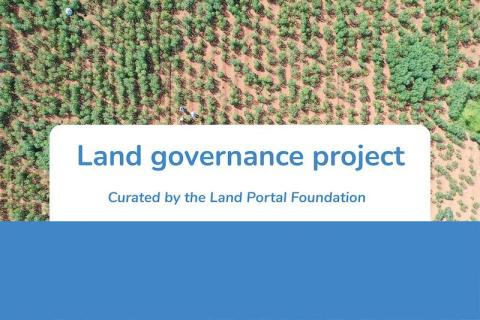Location
About Us
We envision a world in which land governance systems, both formal and informal, are effective, accessible, and responsive for all. This is possible when land tenure and property rights are recognized as critical development issues and when the United States Government and its development partners demonstrate consistent attention and a firm commitment to supporting coordinated policies and programs that clarify and strengthen the land tenure and property rights of all members of society, enabling broad-based economic growth, gender equality, reduced incidence of conflicts, enhanced food security, improved resilience to climate change, and effective natural resource management.
Mission Statement
The USAID Land Tenure and Resource Management (LTRM) Office will lead the United States Government to realize international efforts—in accordance with the U.S. Government’s Land Governance Policy—to clarify and strengthen the land tenure and property rights of all members of society—individuals, groups and legal entities, including those individuals and groups that are often marginalized, and the LTRM Office will help ensure that land governance systems are effective, accessible, and responsive. We will achieve this by testing innovative models for securing land tenure and property rights and disseminating best practice as it relates to securing land rights and improving resource governance within the USG and our development partners.
Members:
Resources
Displaying 361 - 365 of 440Land Rights-Global
General
Promote and defend the rights of women, smallholder farmers and communities to enable access and control over land and its resources: strengthen policy to secure women?s land rights; combat commodity-driven deforestation and defend land rights.
SETAPAK 3 - Improving Governance and Civil Society to Prevent Deforestation and Land Degradation in Indonesia
General
SETAPAK 3 will target formulation, review and revision of relevant government policies and plans to promote better alignment and harmonization with the spatial plans (RTRWs), strategic plans of sectoral ministries or subnational government offices, and/or annual plans, as well as with the standalone policies and ecological fiscal transfer (EFT); Support engagement of CSOs (including journalist and women groups) with powerful national-level government law enforcement bodies, such as the Anti-corruption Commission, the Ombudsman, and local law enforcement agencies; and support communities that have obtained social forestry licenses / land rights or are living in/near forests.
Scaling-up Resilience to One Million People in the Niger River Basin (SUR1M) (BRACED)
Objectives
Its main components are: 1. Livelihoods: Climate-smart agriculture, natural resource management, SILC, child nutrition, value chains (cowpeas, poultry, small ruminants, seeds multiplication and distribution in partnership with a local private company in Niger. 2. Governance: DRR, communal and civil society governance, small grants 3. Gender: increased revenues including through SILC groups, participation in decision-making, child protection, access to land, access to time and fuel energy saving technologies.
Target Groups
The project targets 758 755 people in 12 communes of Tillaberi Region, Niger, and 218,143 in 7 communes of Gao Region, Northern Mali.
Strengthening Forest Legality through Transparency and Accountability
General
The Strengthening Forest Legality through Transparency and Accountability Project builds on previous rounds of FGMC support. The first round supported WRI to launch Global Forest Watch (GFW), an online platform monitoring forests everywhere in near-real time. In the second round, WRI worked to demonstrate how transparency combined with customized information technology solutions could strengthen timber legality enforcement and private sector compliance, and drive greater accountability for tropical forest management. In the third FGMC round, WRI will deepen gains in forest and timber trade transparency while securing emerging processes and practices to hold governments and the private sector accountable for forest management and land use decisions. GFW remains central, and the Project will maintain and expand the global functions and reach of GFW. We will also expand ongoing engagement with actors and political processes globally and in key VPA and processing countries (Cameroon, Republic of Congo, China) to scale use of targeted information technology solutions. These include: Forest Watcher – a mobile app that brings near-real time deforestation alerts offline and into the field to assist law enforcement and civil society to identify and interdict forest crime. Forest Atlases – nationalized versions of the GFW platform owned and operated by forest ministries to enhance forest land use transparency and related policy enforcement. Open Timber Portal (OTP) – a web-based platform promoting trade in legal forest products by compiling information about forest sector compliance from government, companies and third-party forest monitors in producer countries. Uptake of these tools will support governments and private sector to implement their commitments to eliminate deforestation and illegal logging, and enable civil society to hold these actors accountable for their commitments.
"for the Climate and Land Use Alliance"
General
"ClimateWorks’ Climate and Land Use Alliance has a mission to realize the potential of forested and agricultural landscapes to mitigate climate change, benefit people, and protect the environment, primarily in Indonesia, Brazil, and Mesoamerica. Land use — from deforestation, land degradation, and the draining and burning of tropical peatlands to fertilizer application and rice and cattle production — is responsible for about 25% of human-related greenhouse gas emissions. More effective land use protects the climate by reducing carbon emissions and preserving nature’s vital carbon sinks. "


